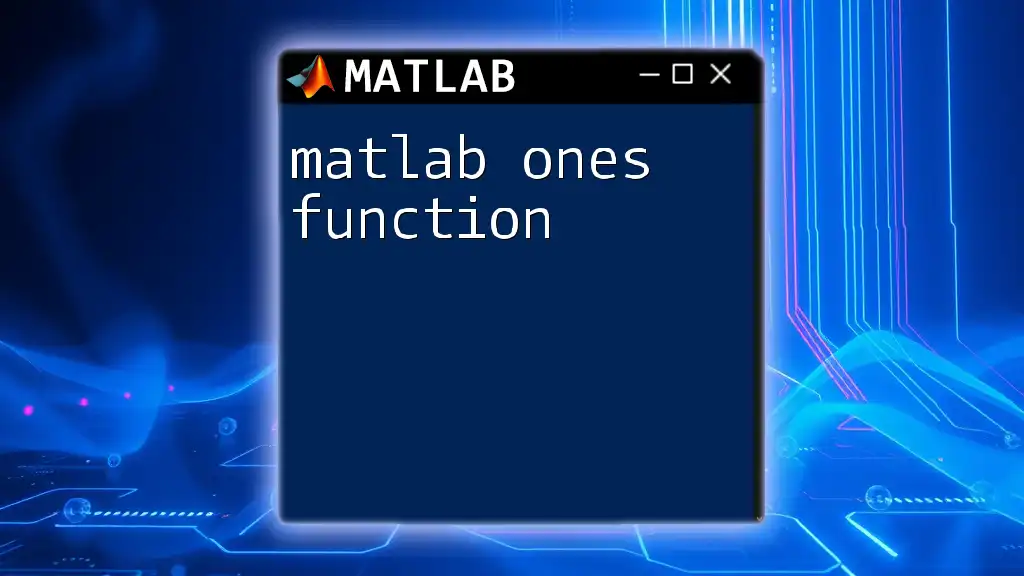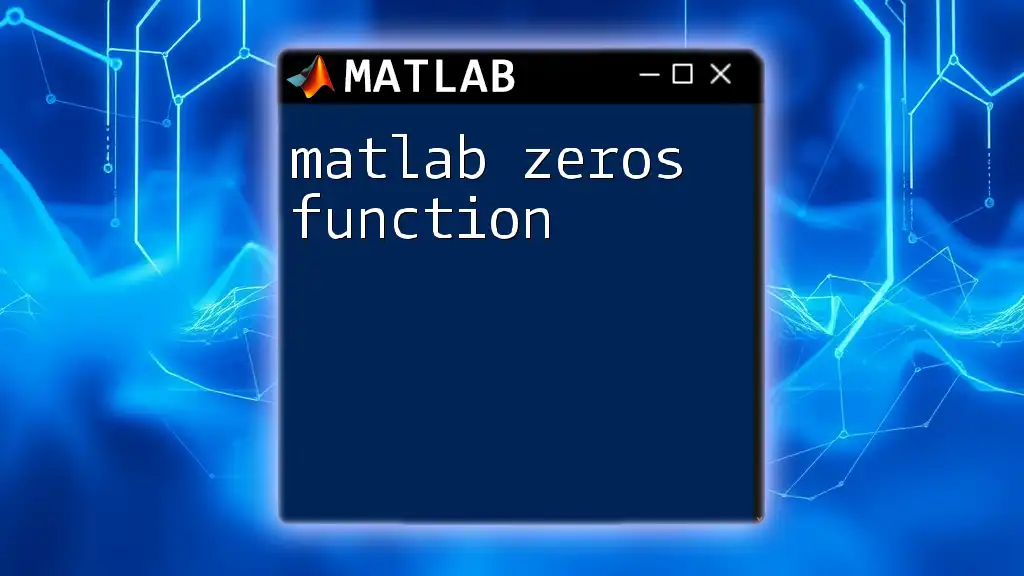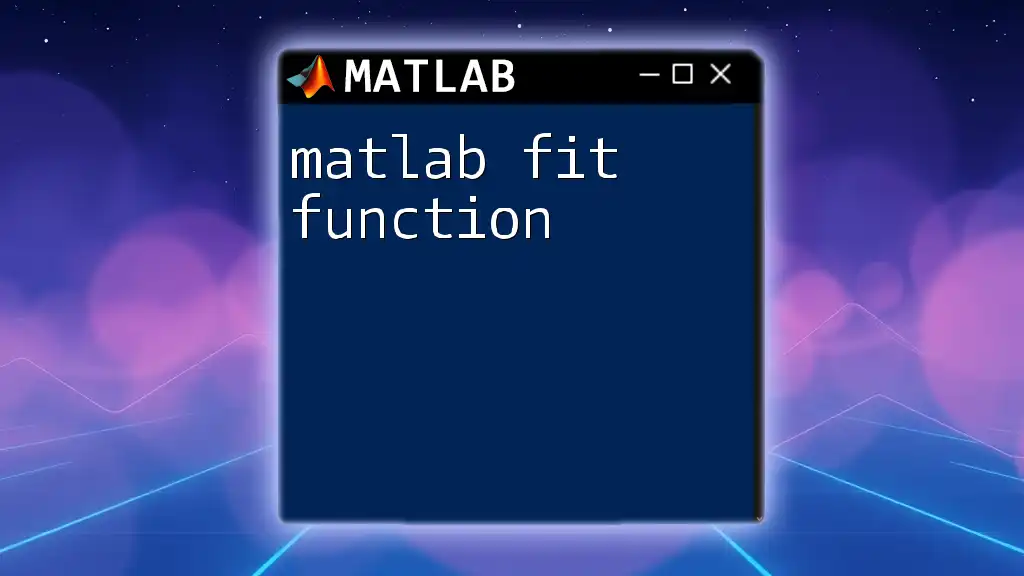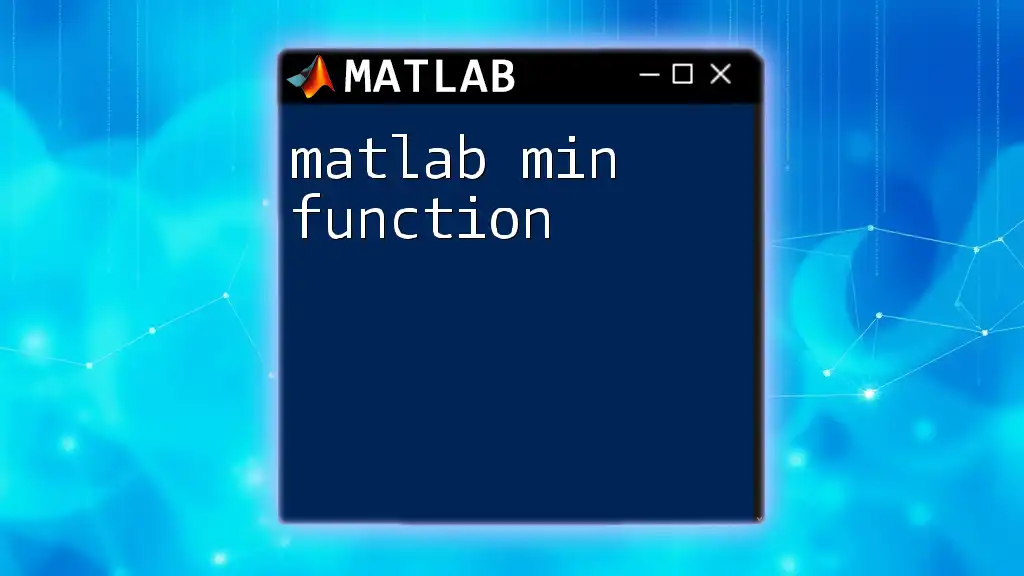The MATLAB `ones` function creates an array of specified size filled with ones.
Here's a code snippet:
A = ones(3, 4); % Creates a 3x4 matrix filled with ones
Understanding the Ones Function
What is the Ones Function?
The MATLAB ones function is a built-in function that generates matrices filled with ones. It is particularly useful for initializing arrays, performing computations, or testing algorithms. The general syntax is straightforward: `ones(n)` creates an n-by-n matrix, while `ones(m, n)` generates an m-by-n matrix, allowing for flexibility in matrix dimensions.
Purpose of the Ones Function
The ones function is essential in various scenarios when you need a matrix filled with unit values. It can be particularly handy for creating placeholder matrices in mathematical operations or simulations. When compared to other matrix generation functions like `zeros()` and `eye()`, the ones function serves a unique role in initializing matrices with all elements set to one.

How to Use the Ones Function
Creating a One-Dimensional Array
To create a one-dimensional array of ones, you can use the syntax `ones(1, n)`. This generates a row vector filled with ones.
Code Example:
% Create a one-dimensional array of 5 ones
onesArray = ones(1, 5);
disp(onesArray);
When you run this code, the output will display:
1 1 1 1 1
This showcases that a one-dimensional array of five elements has been successfully created.
Creating a Two-Dimensional Matrix
If you want to generate a two-dimensional matrix filled with ones, the syntax `ones(m, n)` comes into play, where m is the number of rows and n is the number of columns.
Code Example:
% Create a 3x4 matrix of ones
onesMatrix = ones(3, 4);
disp(onesMatrix);
The output will be:
1 1 1 1
1 1 1 1
1 1 1 1
This confirms that a 3x4 matrix of ones has been created successfully.
Creating Higher-Dimensional Arrays
MATLAB enables the creation of higher-dimensional arrays as well, using the syntax `ones(dim1, dim2, ..., dimN)`. This feature is particularly useful for complex data structures, such as 3D matrices or tensors.
Code Example:
% Create a 2x3x4 three-dimensional array of ones
onesArray3D = ones(2, 3, 4);
disp(onesArray3D);
The output displays a 2x3x4 array filled with ones, demonstrating how MATLAB handles multidimensional arrays seamlessly.
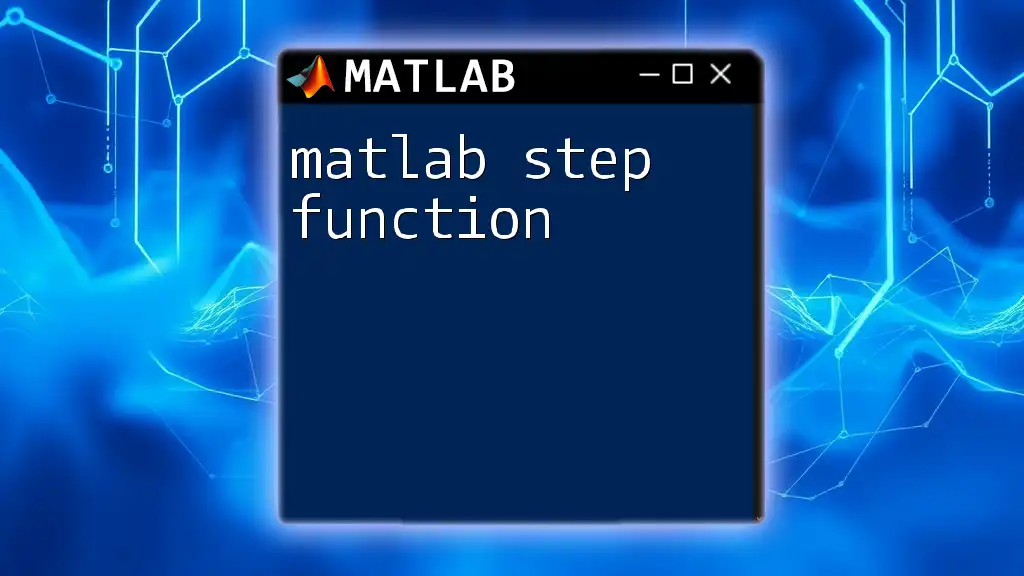
Working with the Ones Function
Using Ones with Other Functions
You can combine the ones function with other MATLAB functions for cleaner code and better readability. For example, initializing a matrix and then adding a scalar makes your computations straightforward.
Code Example:
% Initialize a matrix for adding a scalar
A = ones(3, 3);
B = 5;
C = A + B;
disp(C);
This will result in:
6 6 6
6 6 6
6 6 6
Here, the ones function initializes matrix A to fill it quickly with a scalar value of 5.
Modifying Matrices Created with Ones
Once you create a matrix using the ones function, you can easily modify its elements. This feature allows for matrix manipulation, which is beneficial when working with algorithms.
Code Example:
% Change the middle element of a 3x3 matrix of ones
A = ones(3, 3);
A(2, 2) = 9;
disp(A);
Upon execution, the output will be:
1 1 1
1 9 1
1 1 1
This illustrates how simple it is to change specific elements within a matrix initialized with ones.

Practical Applications of the Ones Function
Use Cases in Data Science and Machine Learning
In data science and machine learning, the matlab ones function is often employed to create matrices that serve as default weight initializations. If you’re initializing weights for a neural network, starting with a matrix of ones can simplify computations.
Code Example:
% Initialize weights for a simple model
weights = ones(5, 1);
Here, the weights matrix is initialized with ones, making it valuable for further computations.
Creating Initial Conditions for Simulations
Furthermore, the ones function is commonly used in simulations to set initial conditions. This usage is crucial in various fields, from engineering to finance, where starting conditions play a significant role.
Code Example:
% Setting initial conditions for a simulation
conditions = ones(10, 1);
This command initializes an array of ones that can be adapted for different computations during simulations.

Tips and Best Practices
Efficient Code Writing with Ones
Using the ones function can often make your MATLAB code more efficient and readable. It allows for quicker initialization without manually inputting matrices, promoting cleaner coding practices.
Common Mistakes to Avoid
One common mistake is creating unintended arrays by misidentifying dimensions. For instance, using `ones(2)` instead of `ones(2, 3)` creates a 2x2 matrix instead of a 2x3 matrix.
Code Example:
% Example of a common mistake
% Intended: ones(2, 3)
wrongArray = ones(2); % Creates a 2x2 matrix instead
disp(wrongArray);
Be sure to check your dimensions, as this simple oversight can lead to unexpected results.

Conclusion
This comprehensive overview of the matlab ones function illustrates its importance in MATLAB programming. From creating basic matrices to facilitating more complex data structures, the ones function offers flexibility and ease of use. Practice utilizing the ones function in various scenarios to enhance your MATLAB skills.

Additional Resources
Official MATLAB Documentation
For further reading, refer to the official MATLAB documentation specific to the ones function, providing in-depth explanations of its parameters and usage.
Related Functions in MATLAB
Explore similar functions such as `zeros()`, `eye()`, and `rand()`. Each serves distinct purposes and enhances your understanding of matrix manipulation in MATLAB. Experimenting with these functions alongside the ones function will broaden your programming capabilities.

FAQs
Common Questions About the Ones Function
One question you might have is: What does `ones` return if no dimensions are specified? The answer is a scalar value of 1.
Additionally, users frequently ask if you can set complex number matrices using ones. The answer is yes; one can create such arrays using `complex(ones(m, n))` to specify real and imaginary parts.
By mastering the matlab ones function, you equip yourself with a powerful tool for efficient programming and data manipulation.

